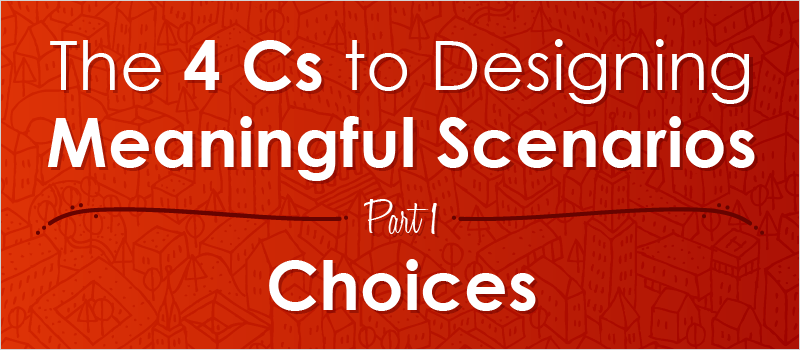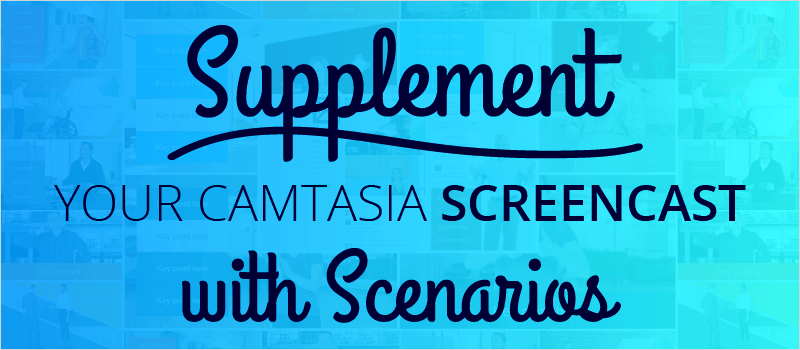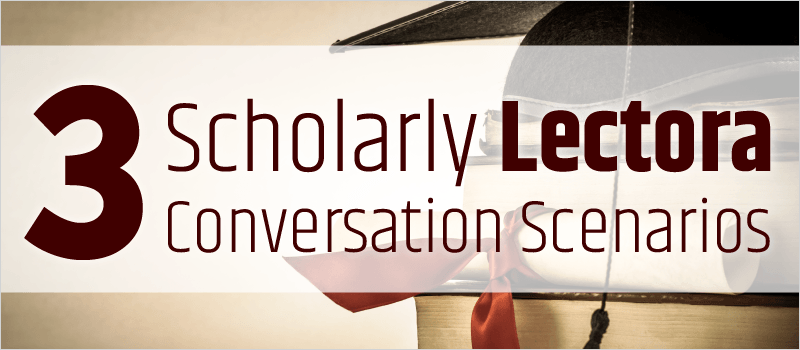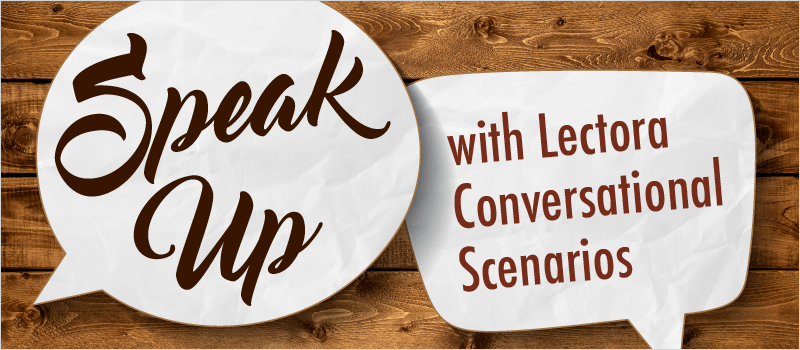Search for...
#scenarios Bookmarks
Published Bookmarks
 The 4 Cs to Designing Meaningful Scenarios, Part 2: Consequences | eLearning Brothers
The 4 Cs to Designing Meaningful Scenarios, Part 2: Consequences | eLearning Brothers
The experience of cause and effect is a very powerful teacher, one our brain is already pre-wired to learn from. Experiencing consequences for our actions gives rise to emotion, which not only catches our attention, but also increases our ability to retain the learning. Despite these advantages, allowing the learner to experience an actual ‘consequence’ for their choice in a scenario is often missing from scenario design.
 The 4 Cs to Designing Meaningful Scenarios, Part 1: Choices | eLearning Brothers
The 4 Cs to Designing Meaningful Scenarios, Part 1: Choices | eLearning Brothers
At its core, a common scenario isn’t that difficult to craft: tell a story, ask the learner what they want to do about it, and let them know how they did. To craft a meaningful scenario, however, there are four areas—four ‘Cs’ to be specific—that you need to strategically design. Let's start with Choices.
 Supplement Your Camtasia Screencast with Scenarios | eLearning Brothers
Supplement Your Camtasia Screencast with Scenarios | eLearning Brothers
We have great scenario templates that fit into any eLearning tool you've got. In this blog we've given some great examples on how to use them with Camtasia.
 3 Scholarly Lectora Conversation Scenarios » eLearning Brothers
3 Scholarly Lectora Conversation Scenarios » eLearning Brothers
As the fall semester winds to a close at many institutions of higher learning, we’re honoring students with a few Lectora conversation scenarios that feature them in prominent roles.
 Speak Up with Lectora Conversational Scenarios » eLearning Brothers
Speak Up with Lectora Conversational Scenarios » eLearning Brothers
As acclaimed journalist and science fiction writer Cory Doctorow once said, “Conversation is king.” Our conversational scenarios have the advantage of putting a human face on things, enacting a potentially true-to-life interpersonal situation relevant to the training topic.
Submit Bookmark

